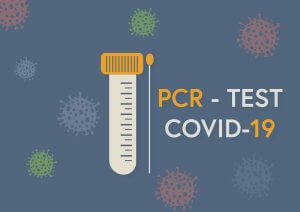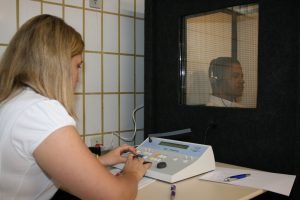A mammography or mammogram is when weak x-rays are used to screen for and diagnose cancer or conditions of the breast. An x-ray is a beam of electromagnetic energy that can produce images of many tissues. The whiter a structure appears on a film the firmer it is. A mammography is mostly performed as a precautionary test for breast cancer by detecting specific masses within the breasts. Breast tissue includes lobes, lobules, and ducts. All these then come together at the nipple and are surrounded by fat tissue. No muscle is found in the breast but is present underneath it. A mammogram can usually indicate is an area of the breast is abnormal but does not necessarily mean you have cancer. A biopsy or extraction of tissues is taken for further analysis.
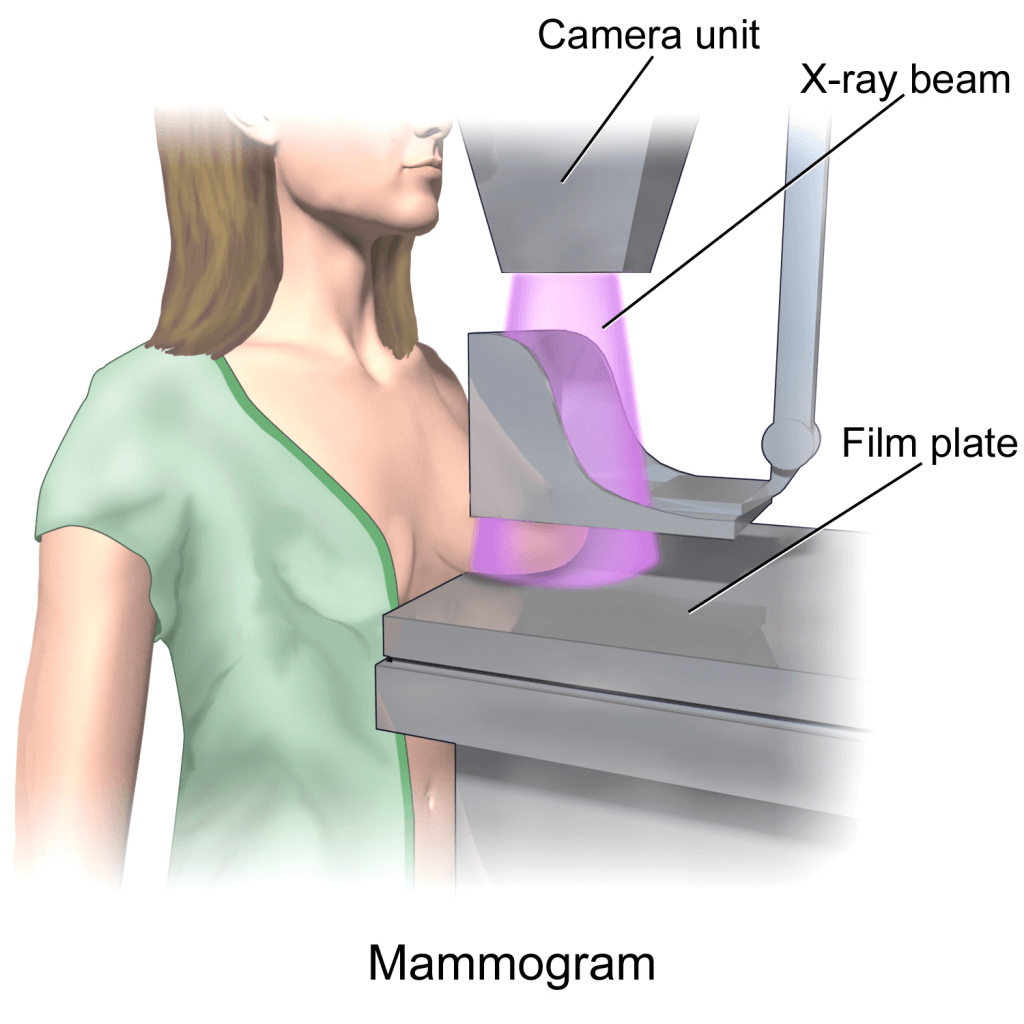
Types
There are two types of mammograms – screening and diagnostic mammograms. In a screening mammogram, the breasts are screened for the changes and symptoms of breast cancer. It involves two x-rays of each breast. By using a mammogram, you can detect a tutor that you could never be able to detect by feeling or sight. A diagnostic mammogram is an x-ray that is used to diagnose changes and the shape of the breast. These mammograms usually follow a screening mammogram that has detected abnormalities.
Indications
Women older than thirty years are advised to undergo a diagnostic mammogram if they have any symptoms that may indicate abnormalities. These symptoms and indications include:
- A palpable lump (can be felt by your hands)
- Breast skin thickening
- Breast skin indentations
- Nipple discharge – A liquid visible leaking from the nipple
- Nipple retraction – a nipple that becomes inverted
- Sore on nipple
- Breast pain
- Have a family history of breast cancer
- Have the BRCA gene mutation
Health experts vary in their recommendations when it comes to mammography. There are, however, general guidelines for screening for early detection of cancer in women with no symptoms. These recommendations are as follows:
- The American College of Radiology recommended that women over forty get mammograms yearly.
- The National Cancer Institute guidelines say that women forty and above should also be screening every one to two years.
Risks
You must keep a track of how many times you have been exposed to radiation and also the amount. It is a good habit to develop is to keep a detailed record of previous exposures and types of exposures. The risks associated with radiation exposure such as x-rays may increase as the number of examinations and treatments increases over a long period.
If it is expected you may be pregnant or are pregnant, this information must be given to your physician. Any type of duration of radiation exposure while you’re pregnant may lead to numerous birth defects in the fetus. In this case that a mammogram is a necessitation, there need to be set precautions to minimize any adverse effects. You may feel a sense of discomfort as your breasts are slightly compressed against the x-ray plate but will not cause any long-term pain or damage to the breast itself.
Some factors may interfere with a mammogram which includes:
- Use of deodorant, creams, lotion, or talcum powder on the breast or underarms
- Breast implants – It is important to inform your physician that you have implants so that an experienced radiologist who can determine accurately the composition of a breast that has implants will be the one to review your results.
- Prior breast surgery.
- Breast changes due to changes in hormones.
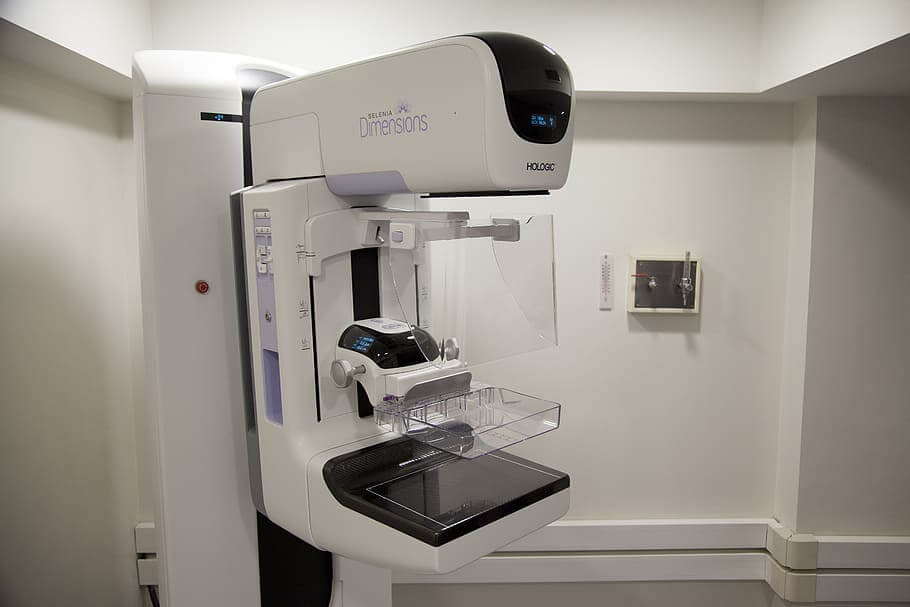
Patient Preparation
Breasts tend to be tender the week before menstruation and during menstruation. It is optimal to try and schedule your mammogram for one to two weeks after the beginning of your period. If you have implants or are suspected or are pregnant, you must inform your physician as soon as possible to avoid any unnecessary complications. Another aspect to consider is whether or not you are breastfeeding as this may make it hard to assess the results of the mammogram. Avoid using personal hygiene products such as deodorants, creams, lotions, and or talcum powder on the day of your exam. You must remove all clothing from the waist up and change into a hospital gown. The removal of all jewelry and metal-like accessories are necessary and is best if left at home. And finally, depending on any other medical condition, your physician may advise additional preparation steps.
Procedure
In a mammogram, you stand in front of a special x-ray machine. The technologist will then come and help place your breast on the plate which is right under your breast. The second plate above will then be placed onto your breast. This helps your breast stay in place while the x-ray is being taken. Pressure can be felt at this point and is normal. These steps are repeated but horizontally for the side-view x-ray. The technologist will then view the mammogram and make sure all the images obtained are assessable.

Patient Recovery
Patient recovery is quite fast as this is not an invasive process. It is quite rare for a patient to complain about breast soreness for the rest of the day. However, it common for women to develop bruising if she is on blood thinners or has a natural tendency to bruise.
Outcomes
Mammograms have two possible results. The first is that the mammogram is normal. In this case, no further examinations are required and women will continue to have mammograms at regular intervals. In the case that your mammogram is abnormal, it does not mean that you have cancer or a tumour. Further testing may be required to see what breast problem may be causing the abnormality and to conclusively state that you have cancer.
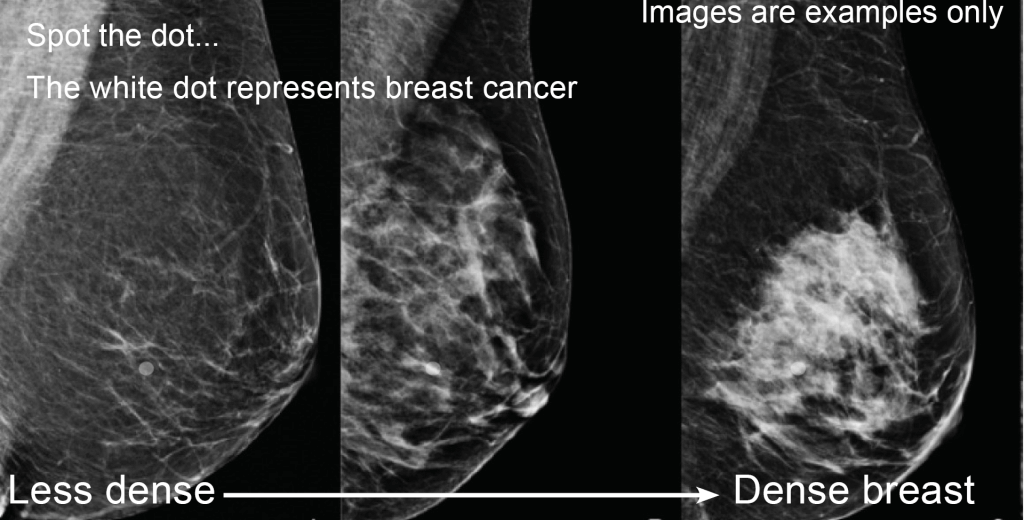
- cdc.gov/cancer/breast/basic_info/mammograms.htm
- https://www.hopkinsmedicine.org/health/treatment-tests-and-therapies/mammogram-procedure
The content shared in the Health Literacy Hub website is provided for informational purposes only and it is not intended to replace advice, diagnosis, or treatment offered by qualified medical professionals in your State or Country. Readers are encouraged to confirm the information provided with other sources, and to seek the advice of a qualified medical practitioner with any question they may have regarding their health. The Health Literacy Hub is not liable for any direct or indirect consequence arising from the application of the material provided.

